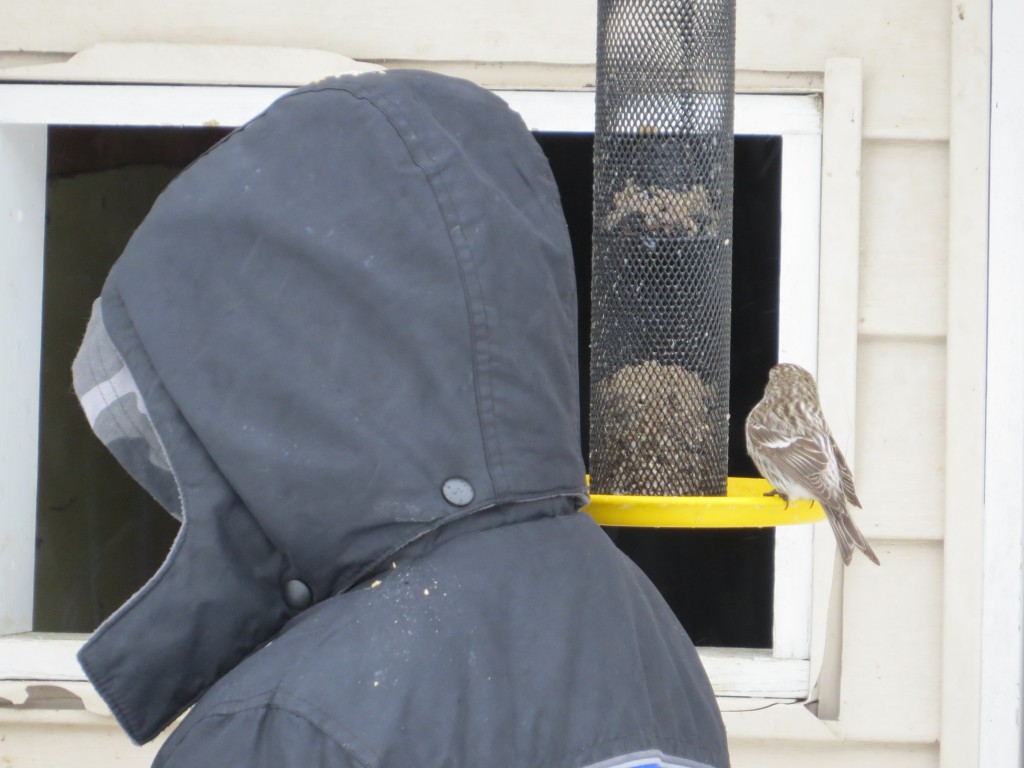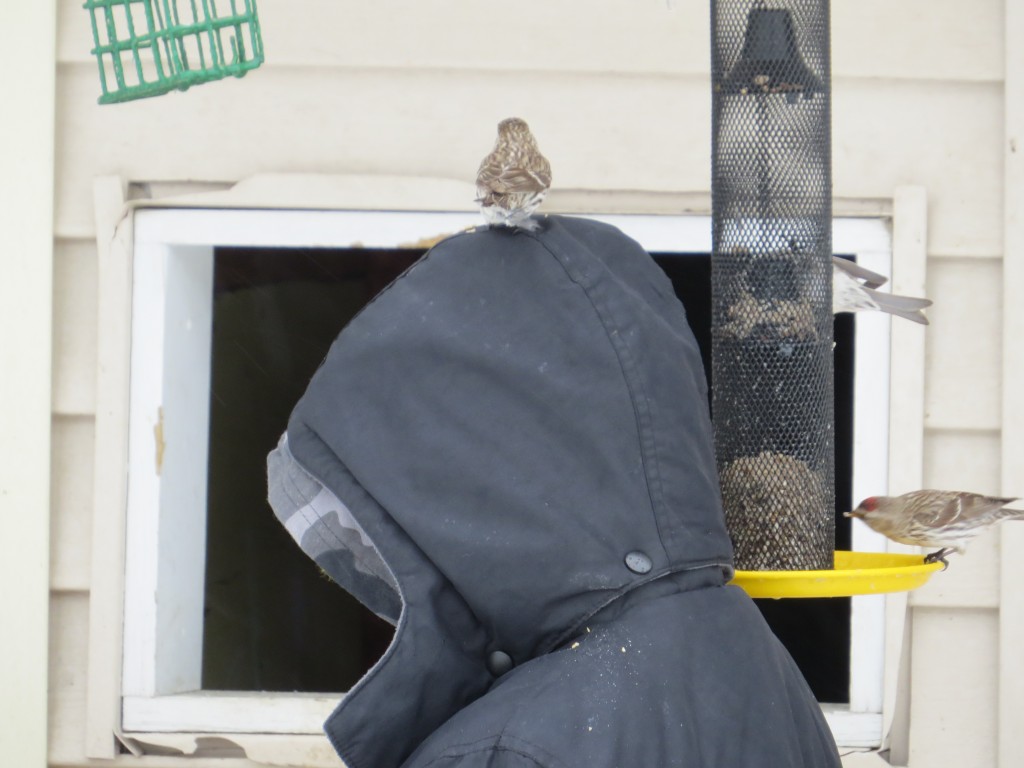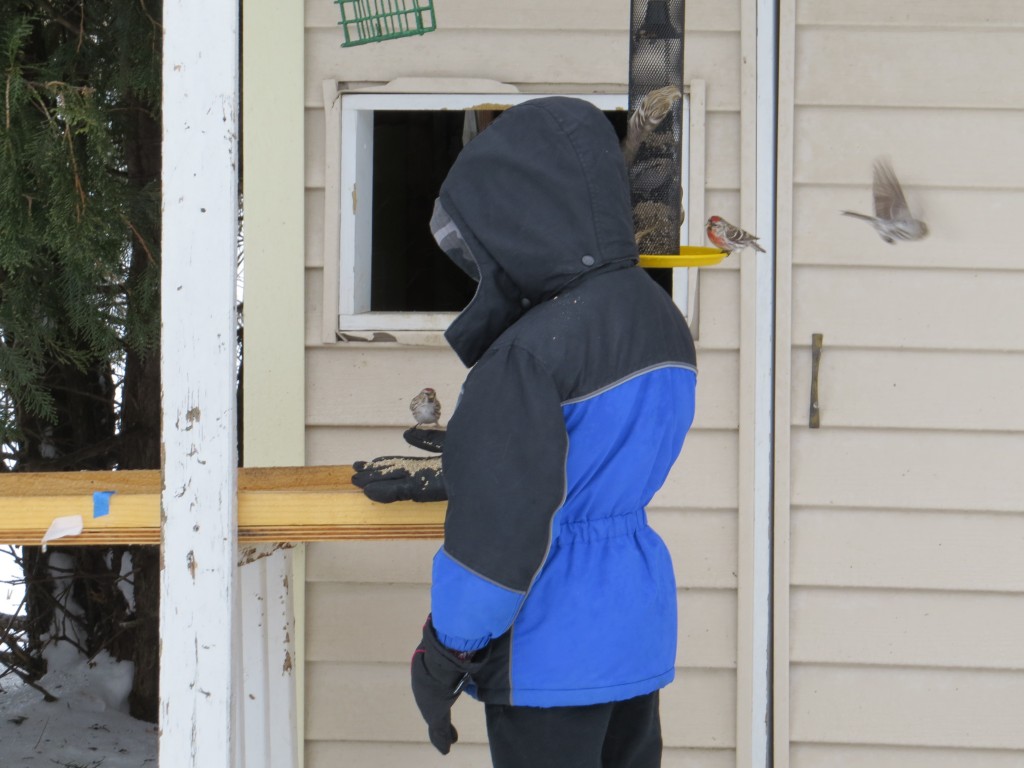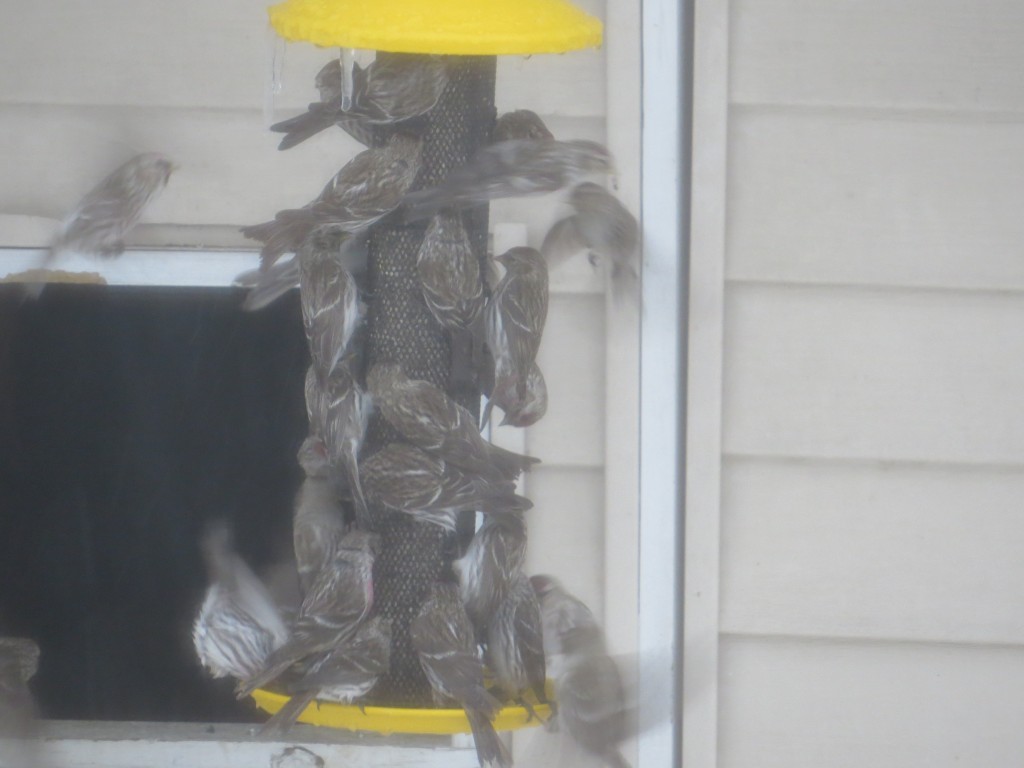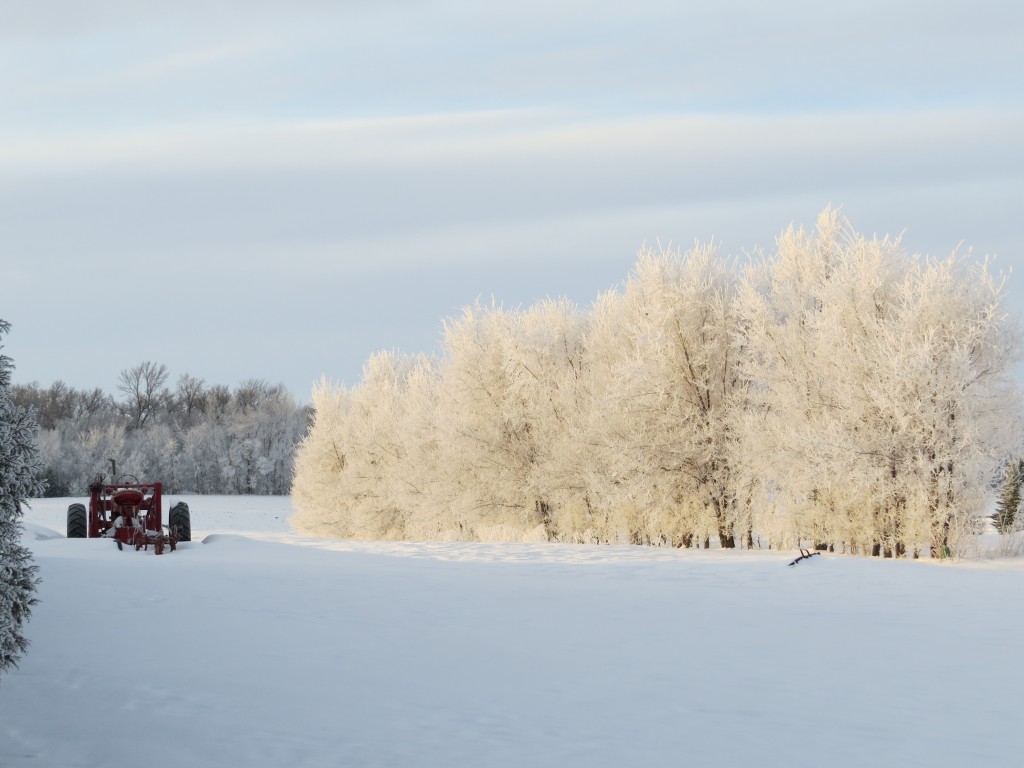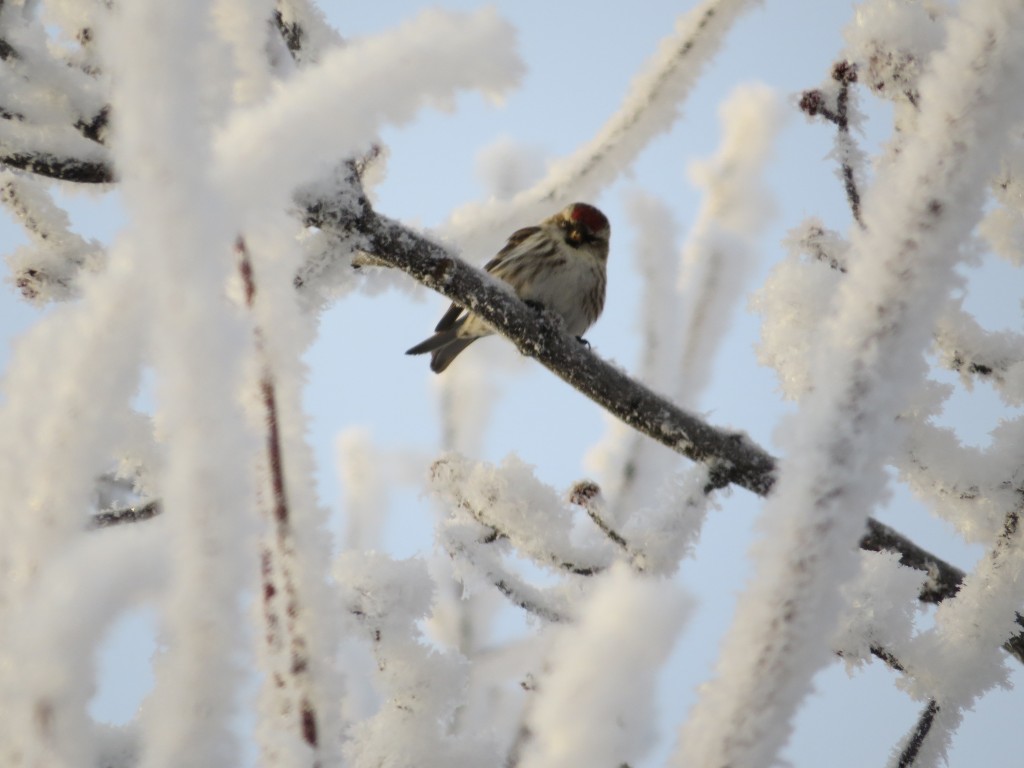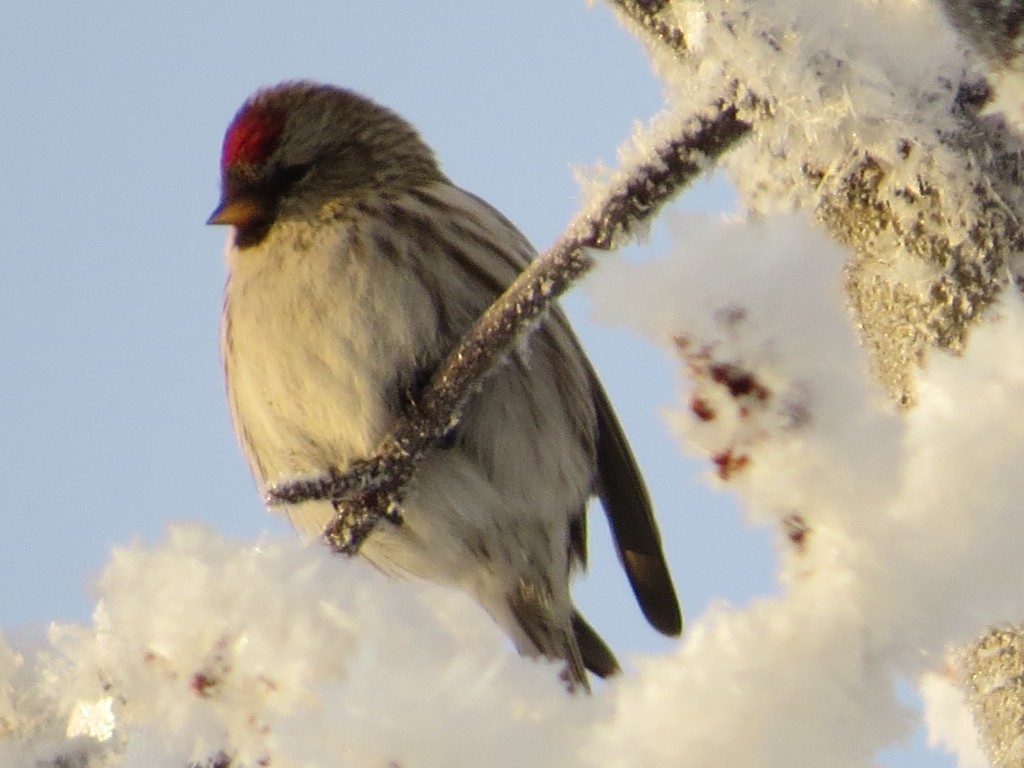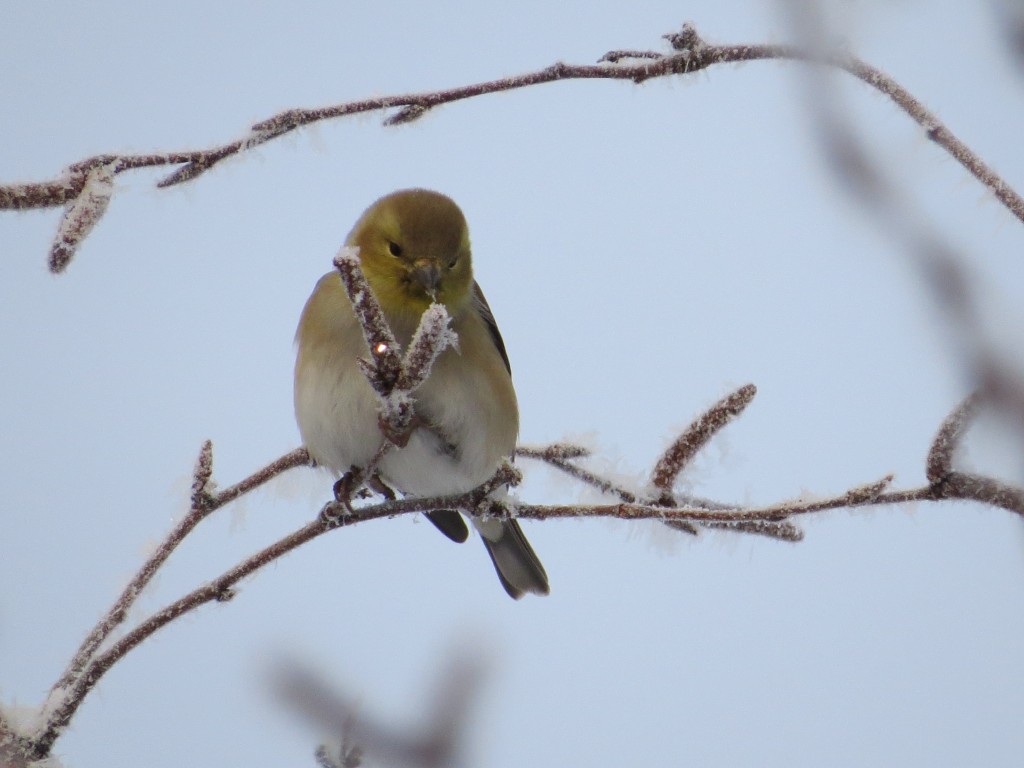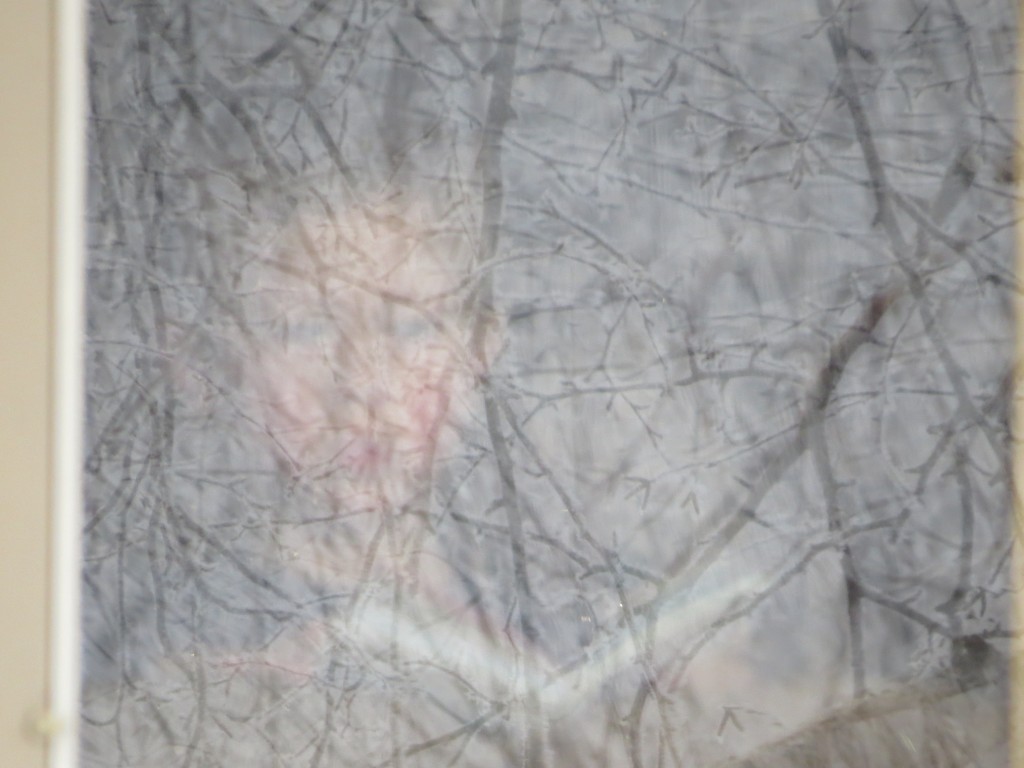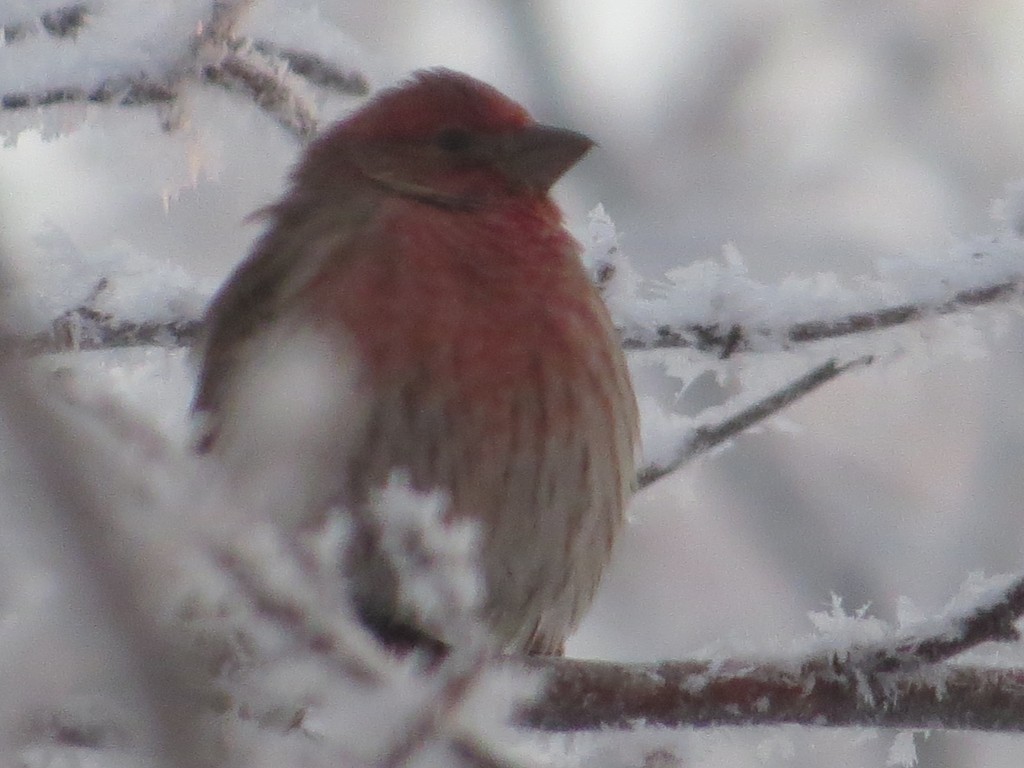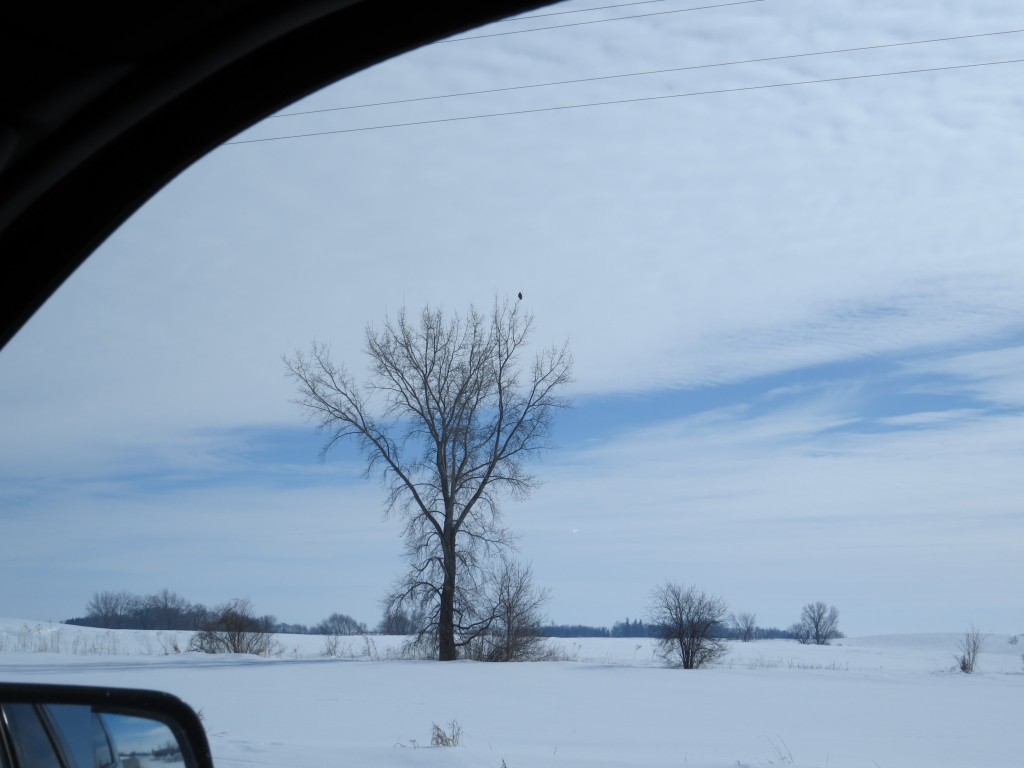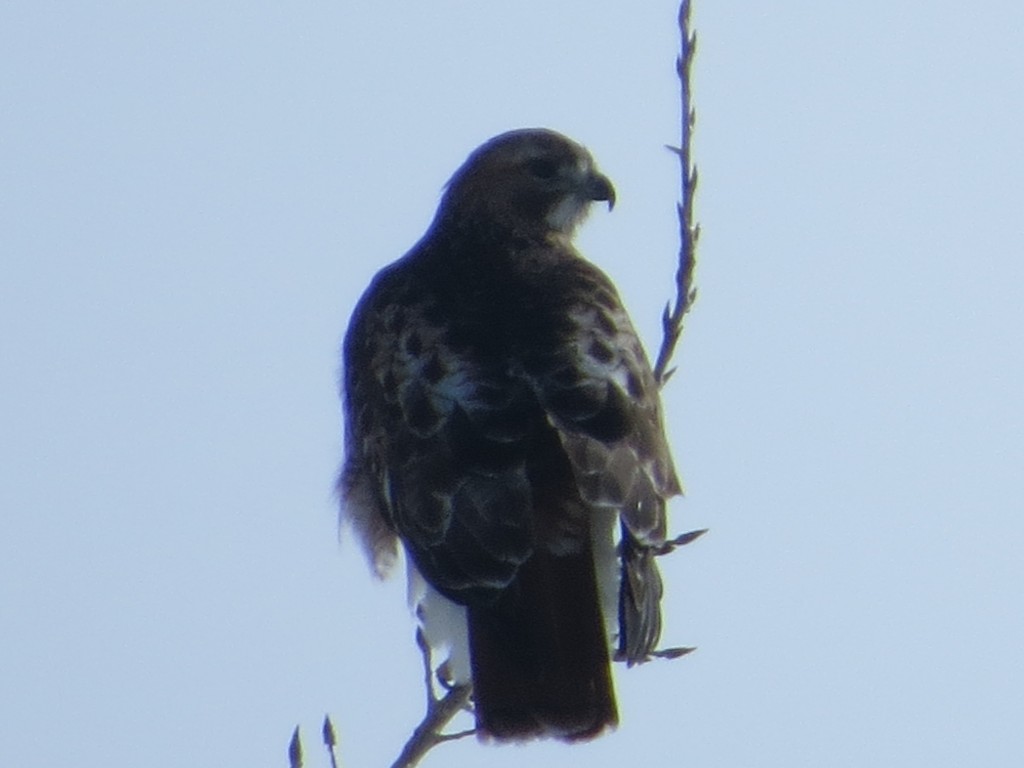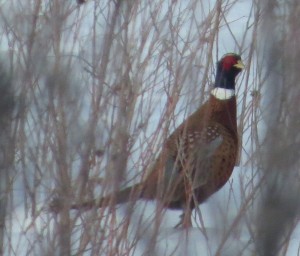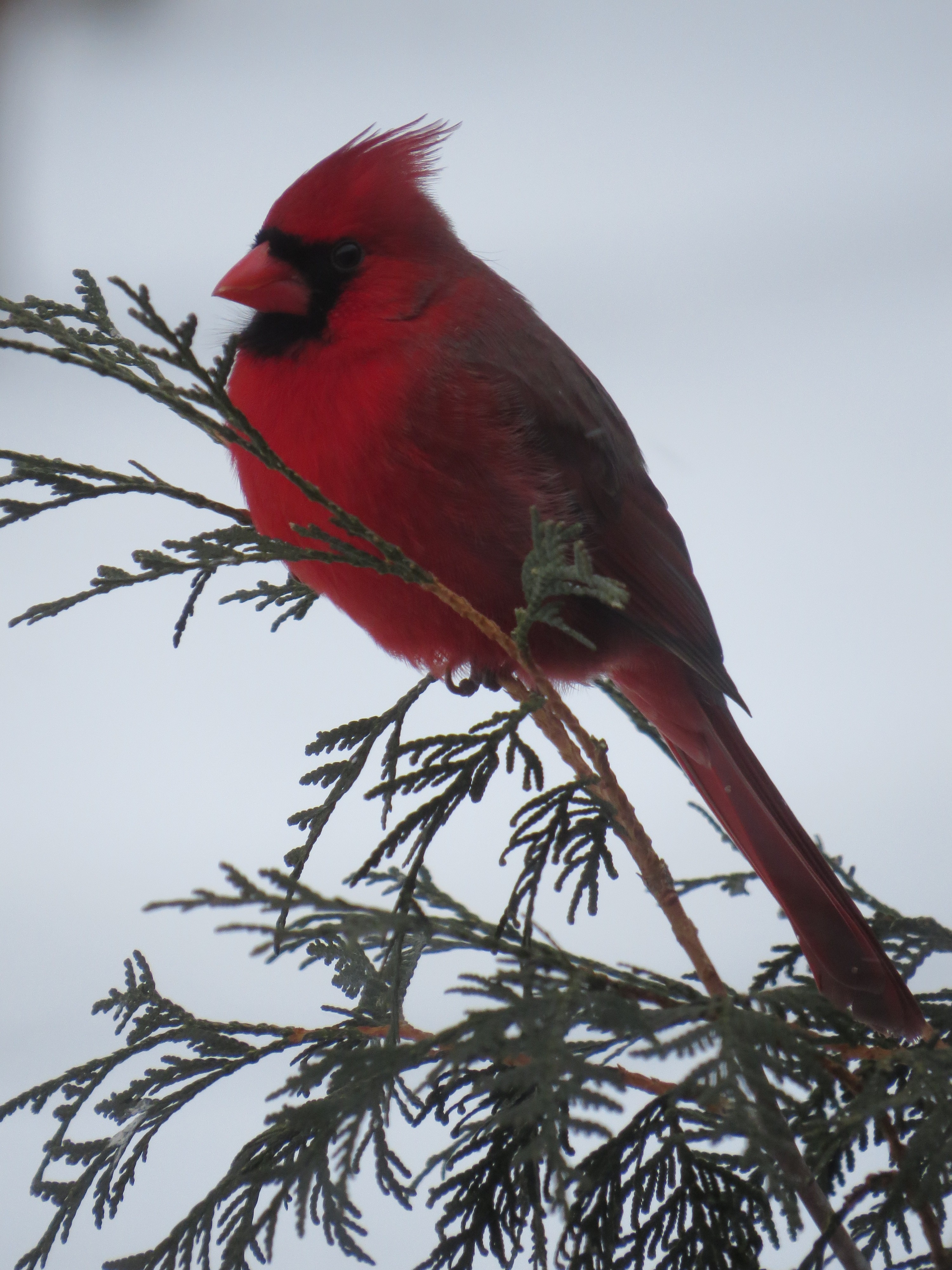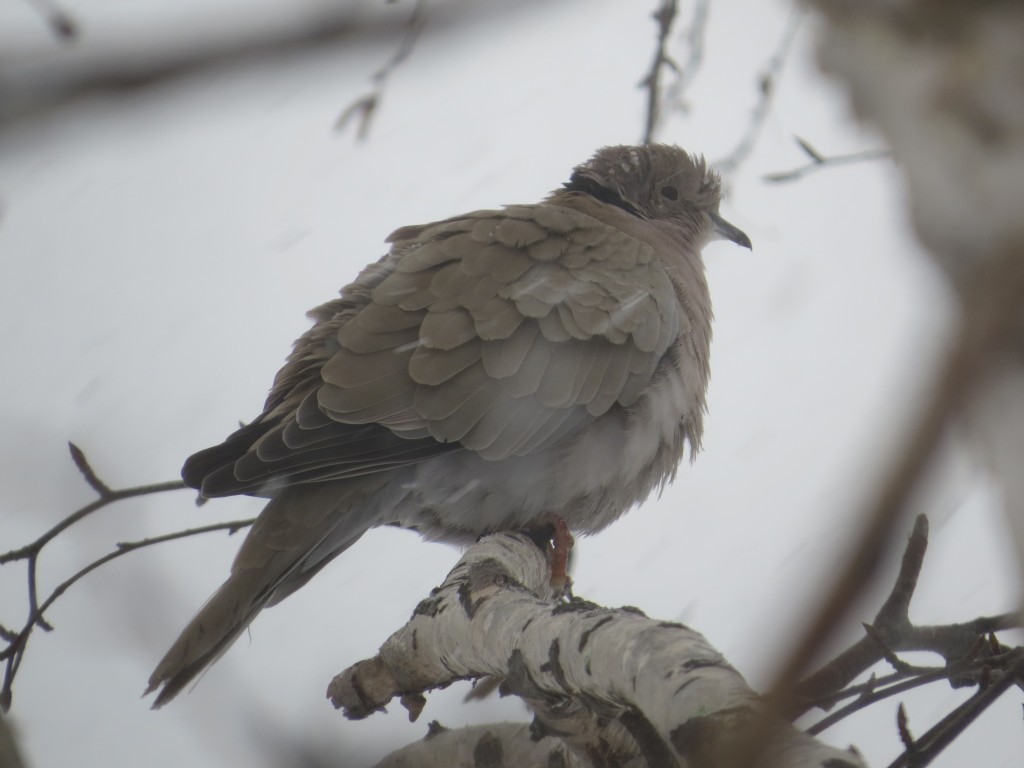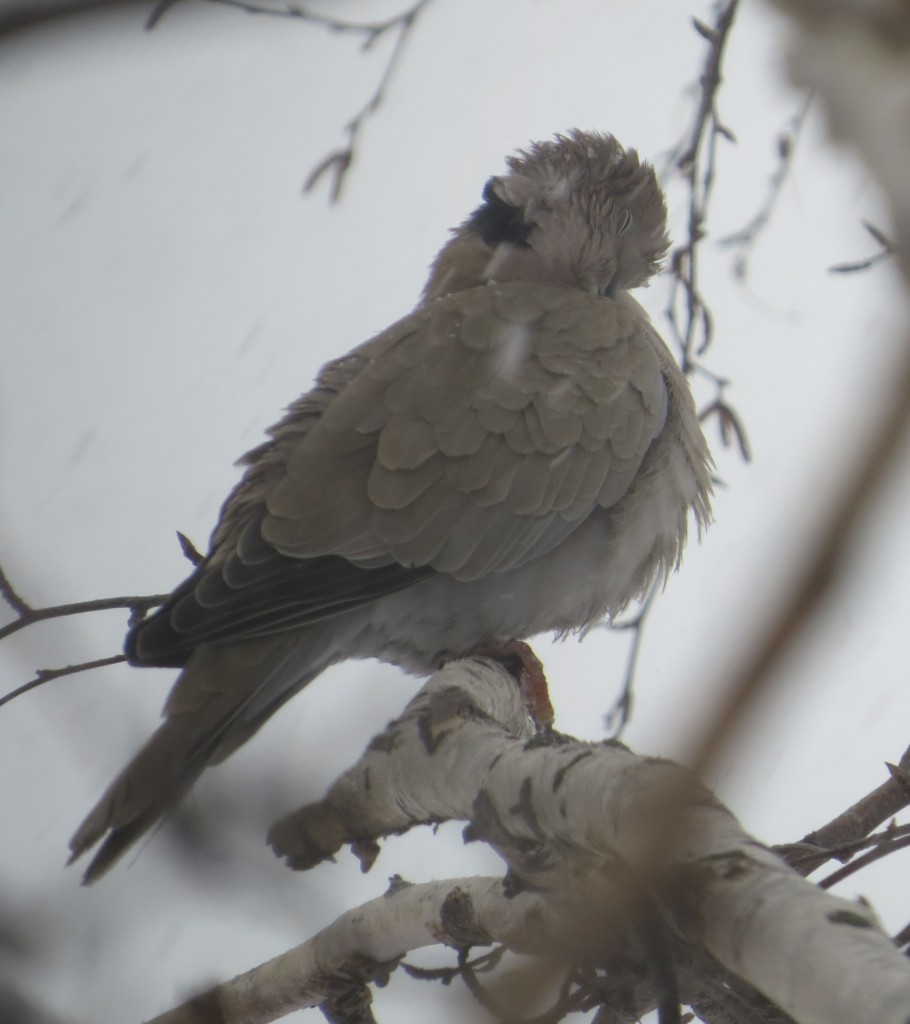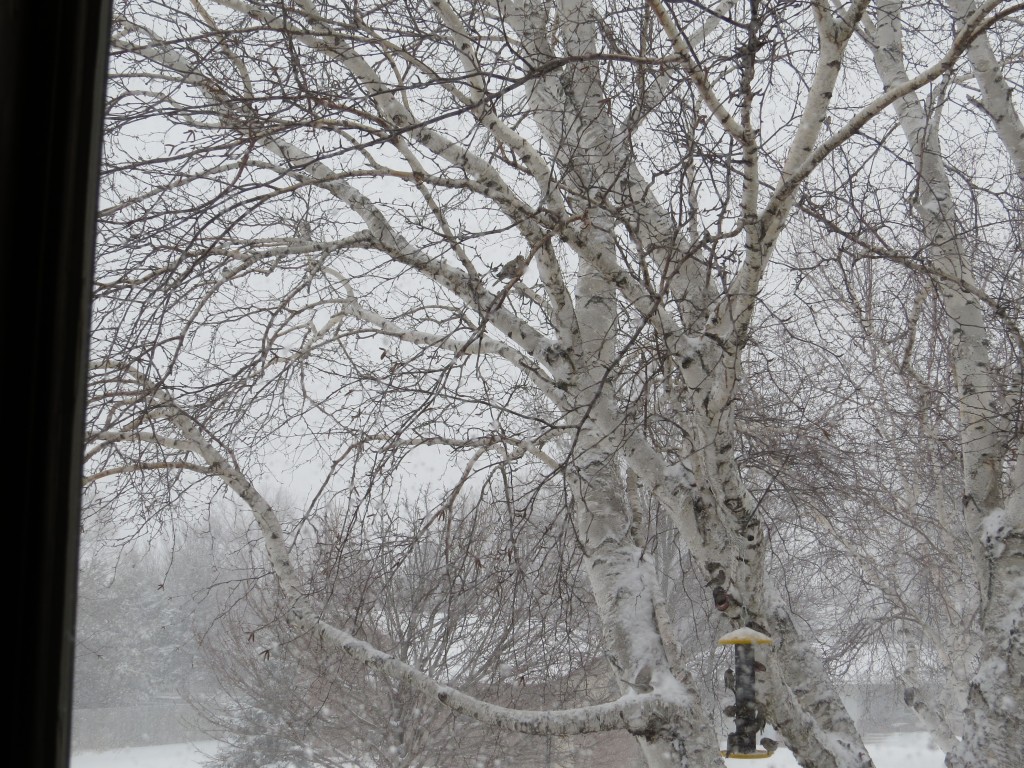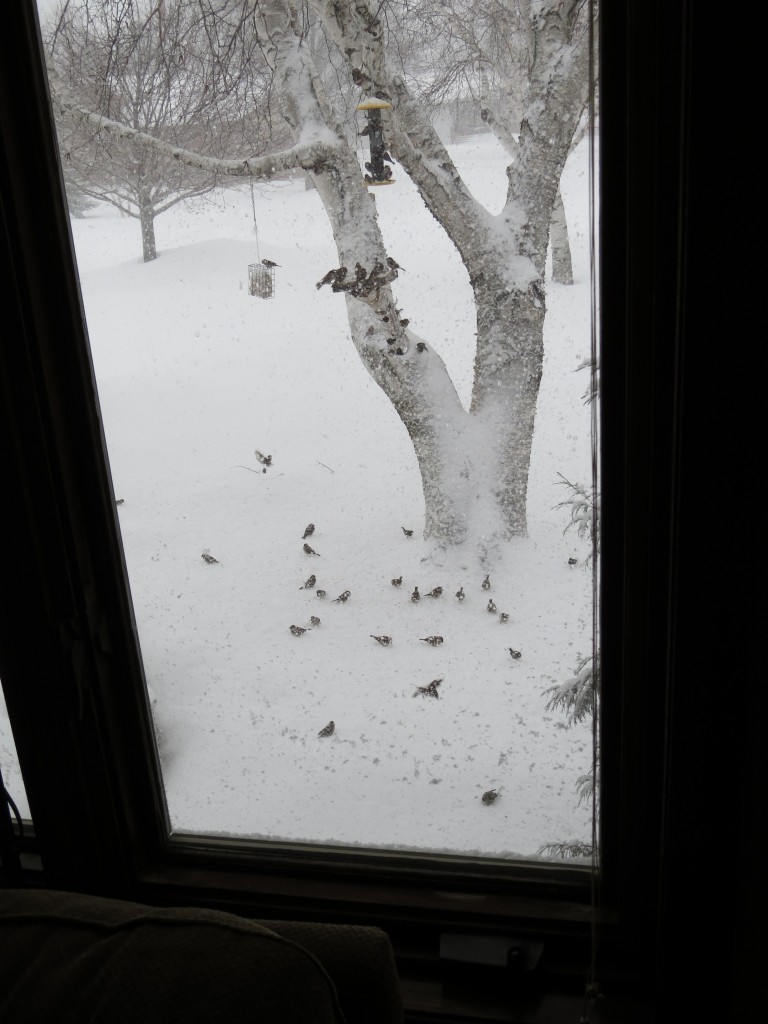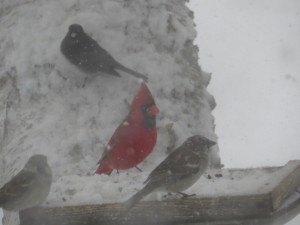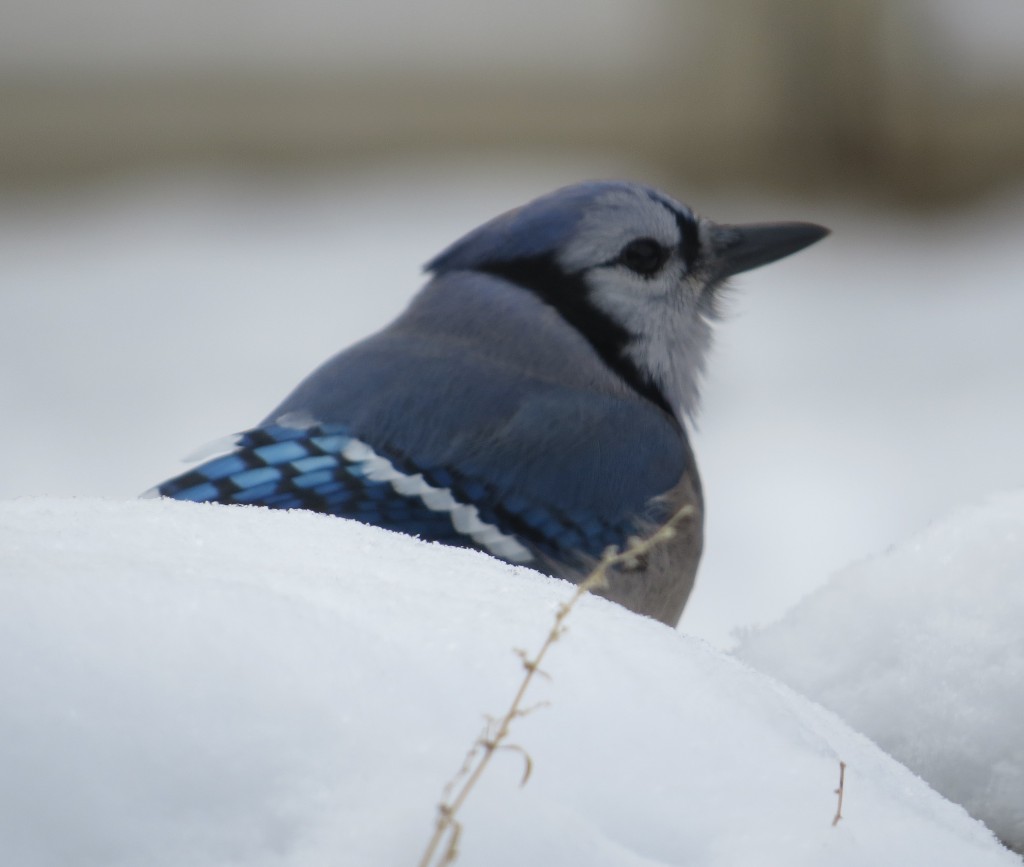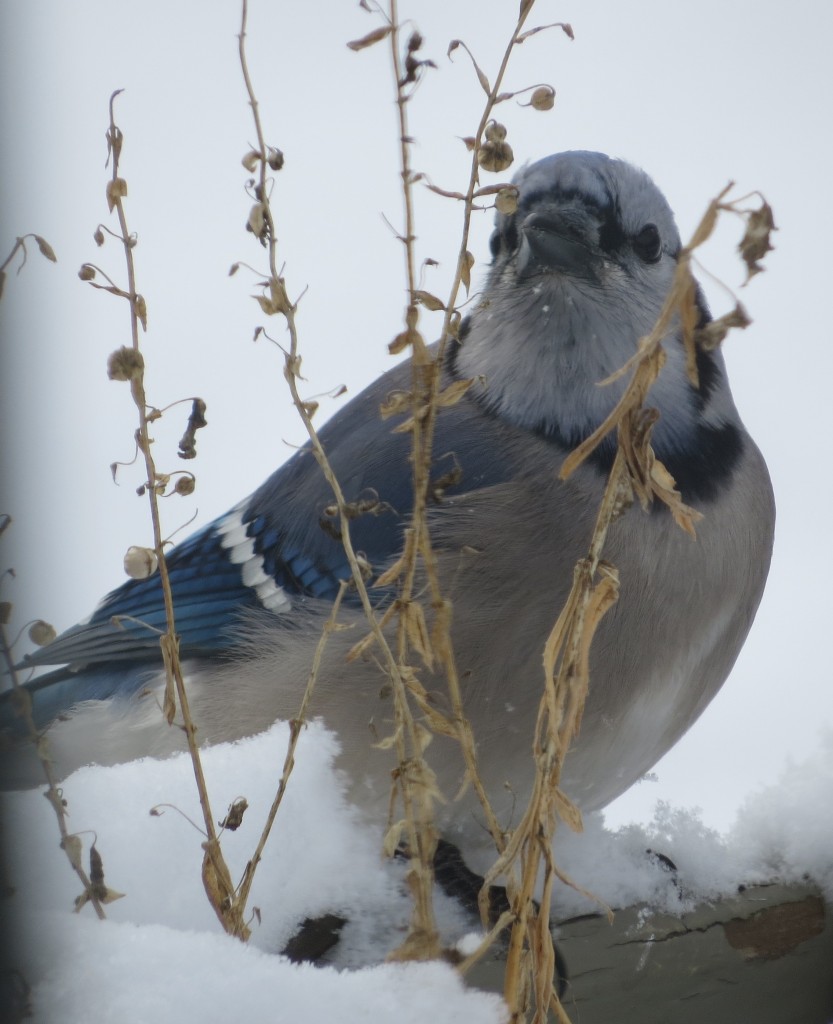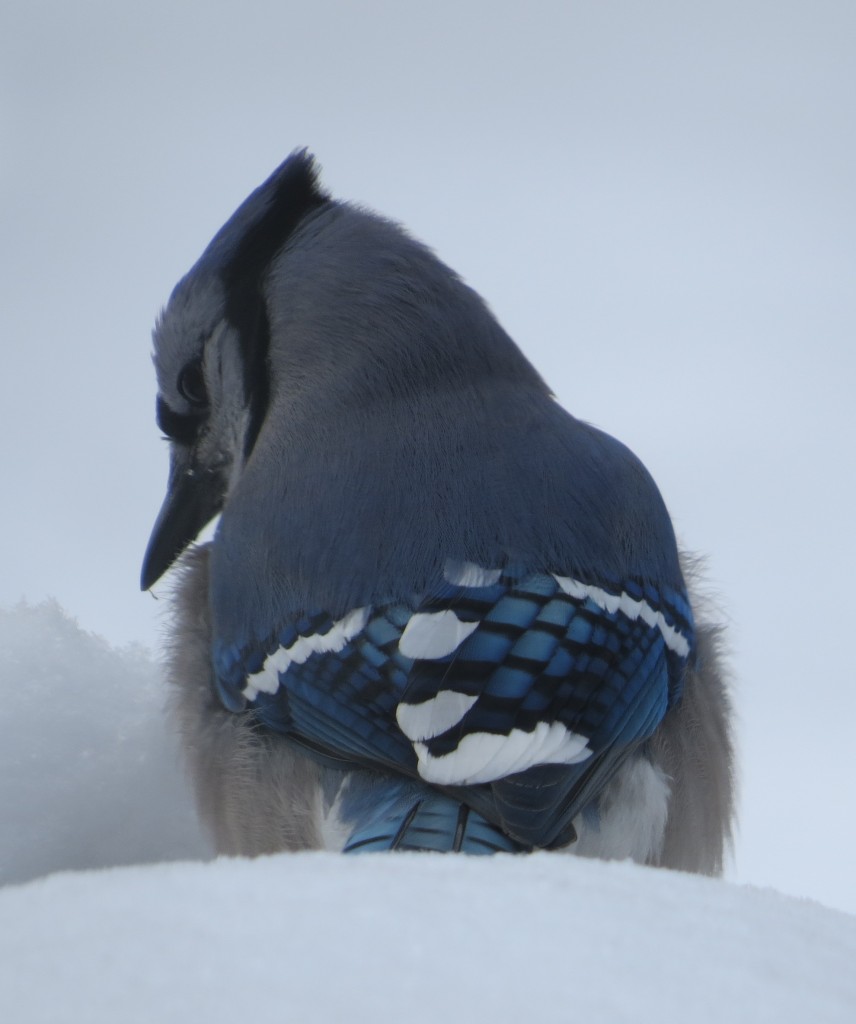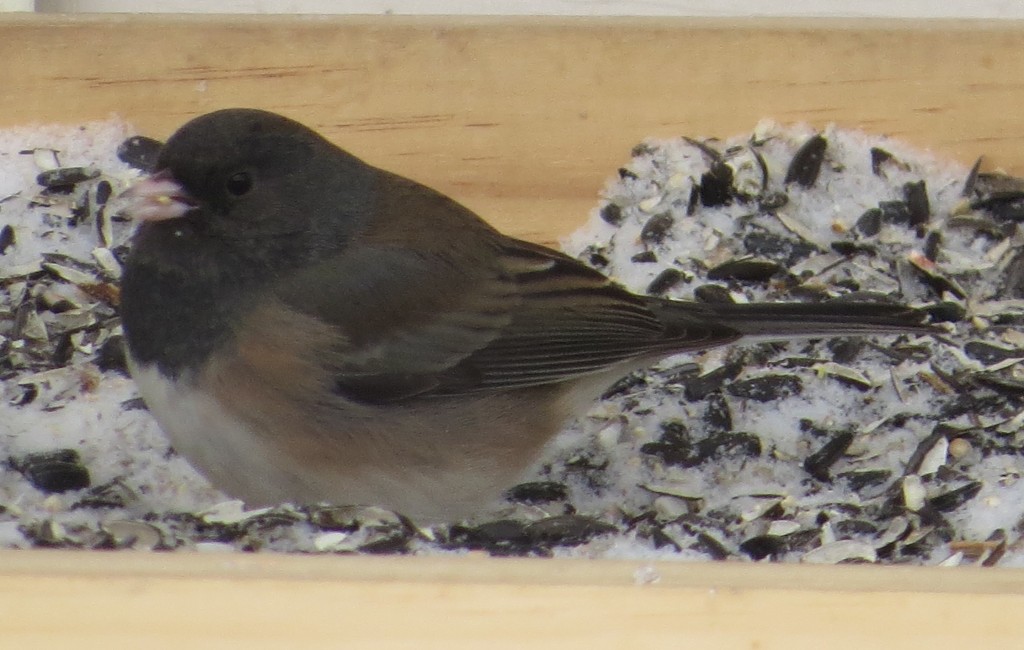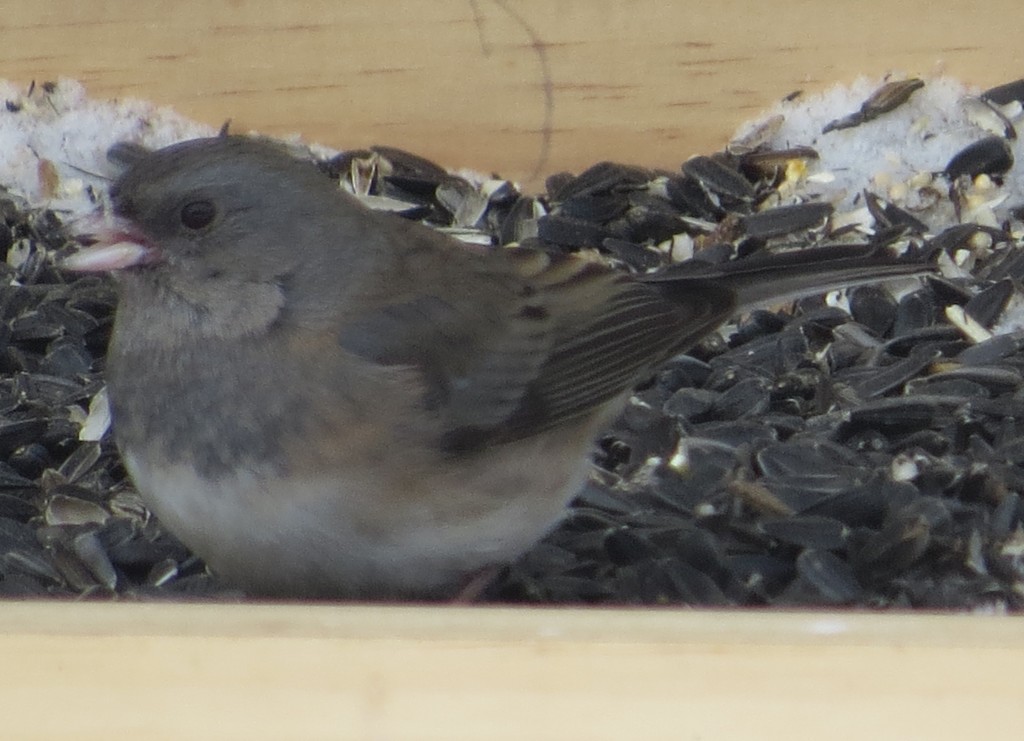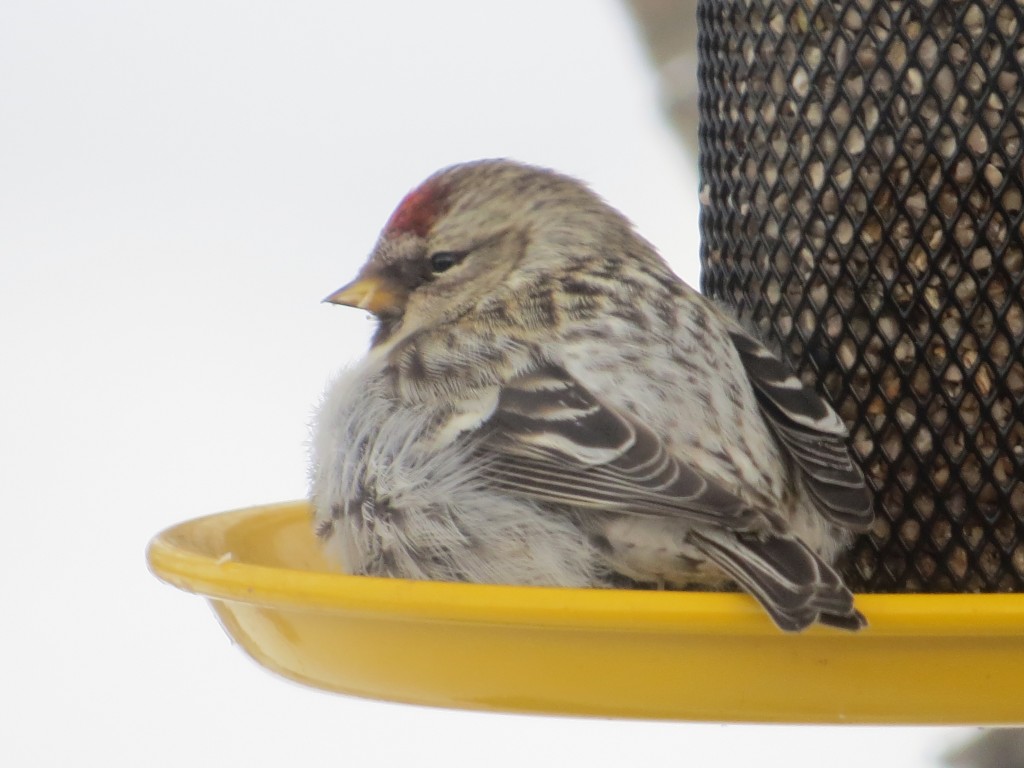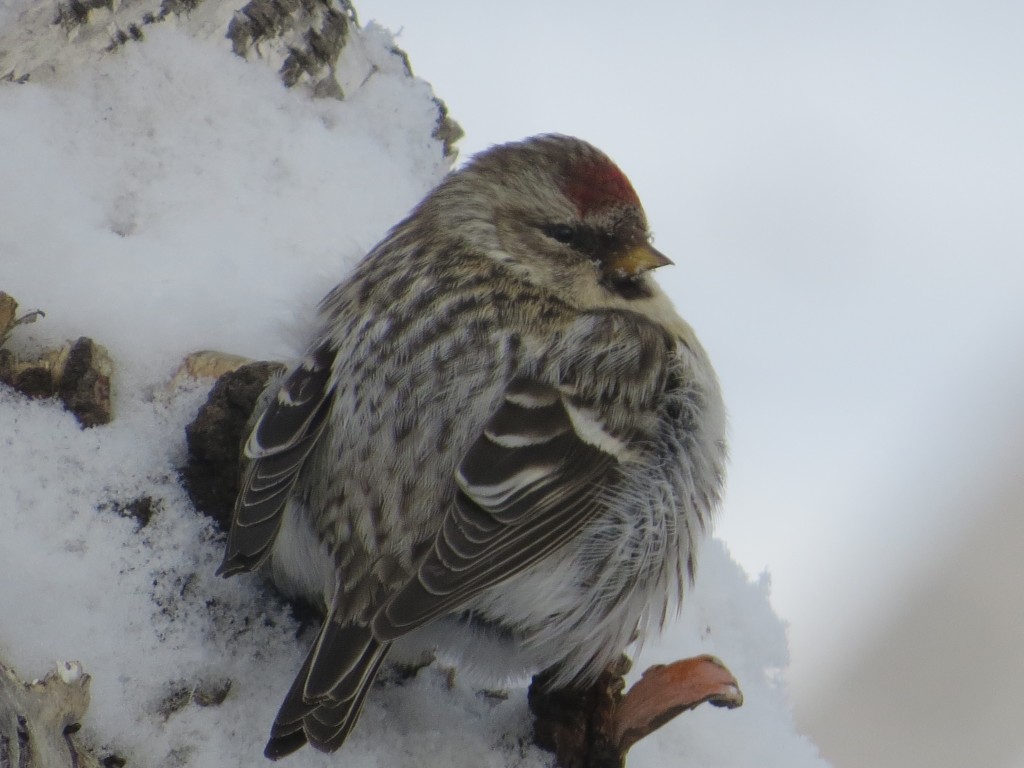It was a beautiful morning when I went out to do my dog chores today. I was constantly looking up to check for anything new in the trees. Migration has been pretty slow in our part of the state compared to the metro area, so I keep expecting to see something new at any moment. After my chores I came in the house and looked out at the front feeder. I saw an LBB come in that looked a little different. I pulled up the binoculars to amplify the low light in the early morning and was pleasantly surprised to find the Pine Siskin – a life bird and winter visitor that eluded us these past several months! I spent a lot of time scanning through dozens of redpolls and goldfinches for this bird all winter but was never able to observe one. It should not have been a difficult bird to get, but it was for us. Imagine my surprise to find it now in May when it should be long gone to the north by now.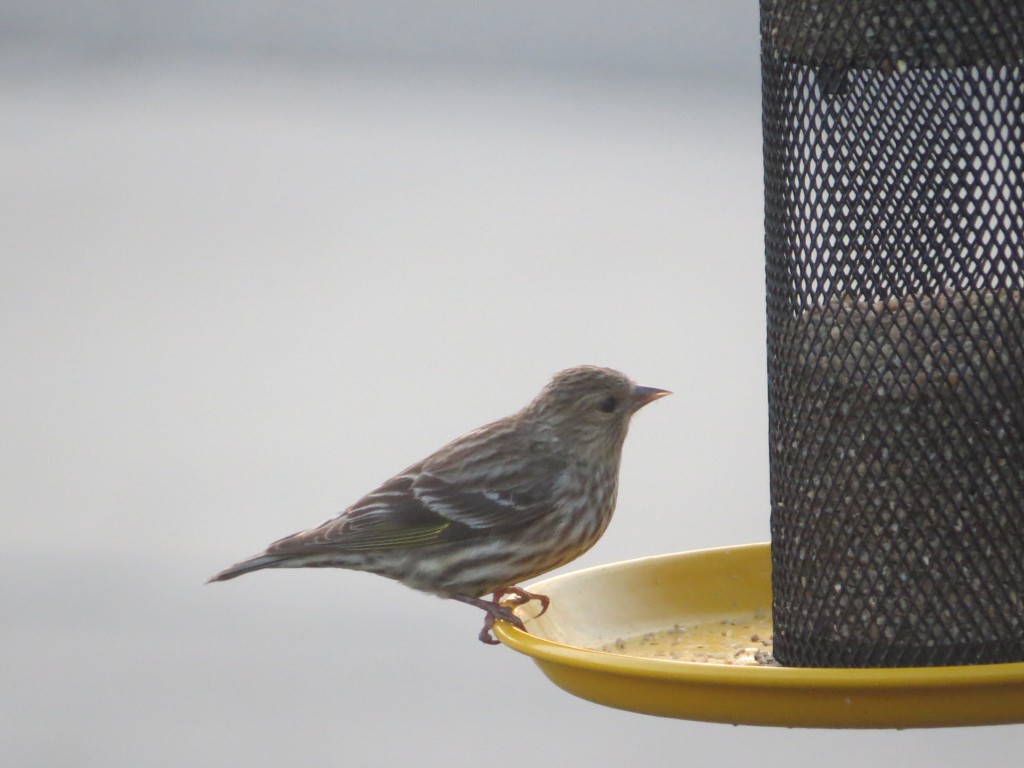
After confirming my sighting with a photograph, I hustled into Evan’s room where he was still sleeping at 6:10. Evan has always been a bear to wake up. It usually takes both of us several trips into his room to try to wake him. Some days we’ve literally dragged him out of bed. I knew it would be different today. I put my hand on his shoulder and whispered, “Evan, we’ve got the Pine Siskin.” His eyes bulged open, and he flew out of bed. He got to see it and add it to his life list too.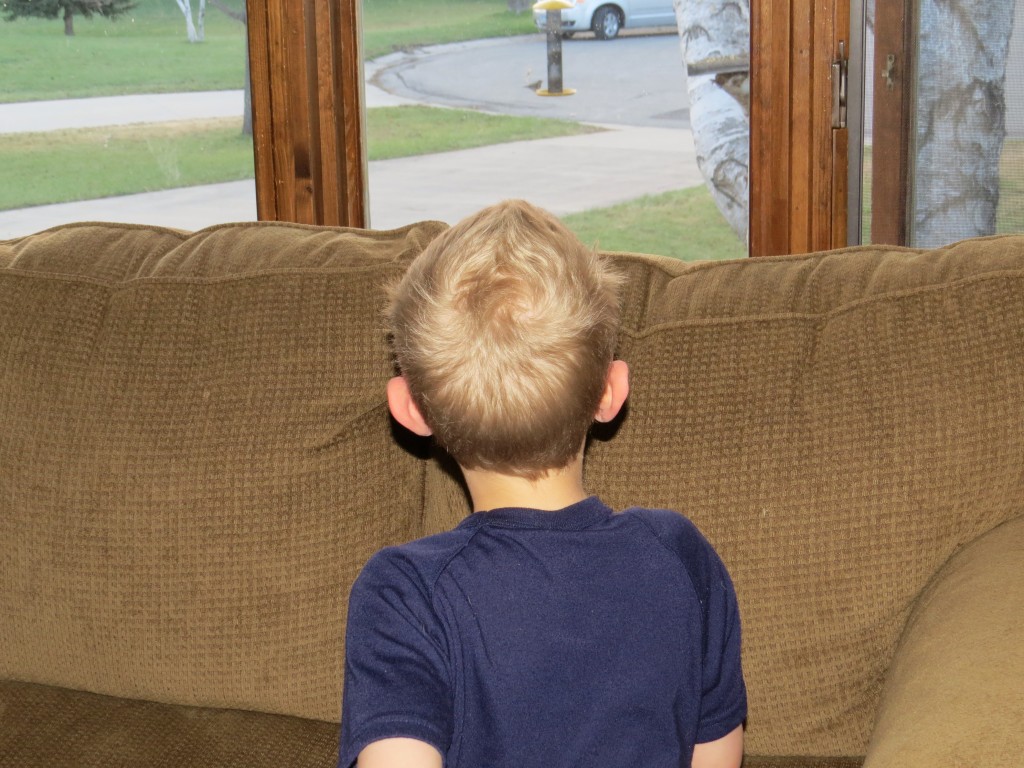
It was a fun way to start the day. We start to get twitchy when we go for more than a day without getting a new life bird. That’s the fun of getting into this sport and being in the midst of spring migration – you never know what you’ll see next, and you usually don’t have to wait long to get a new bird. As much fun as it is to find life birds (I realize that is mostly all I write about), I also appreciate not seeing everything as we experience migration for the first time. Those unseen birds give us something to look forward to for the next season. The hunt and the hope of a new bird is almost as much fun as seeing a new one.
Besides seeing new birds, it is always fun to see familiar birds and appreciate their beauty and behaviors. Tonight I had to travel with Steve for a meeting in Marshall. Of course we had to stop by a marsh right off the highway on the way home to do a little birding. I finally got a picture of the Yellow-headed Blackbird and the Red-winged Blackbird. They splashed the dull marsh with fabulous color.
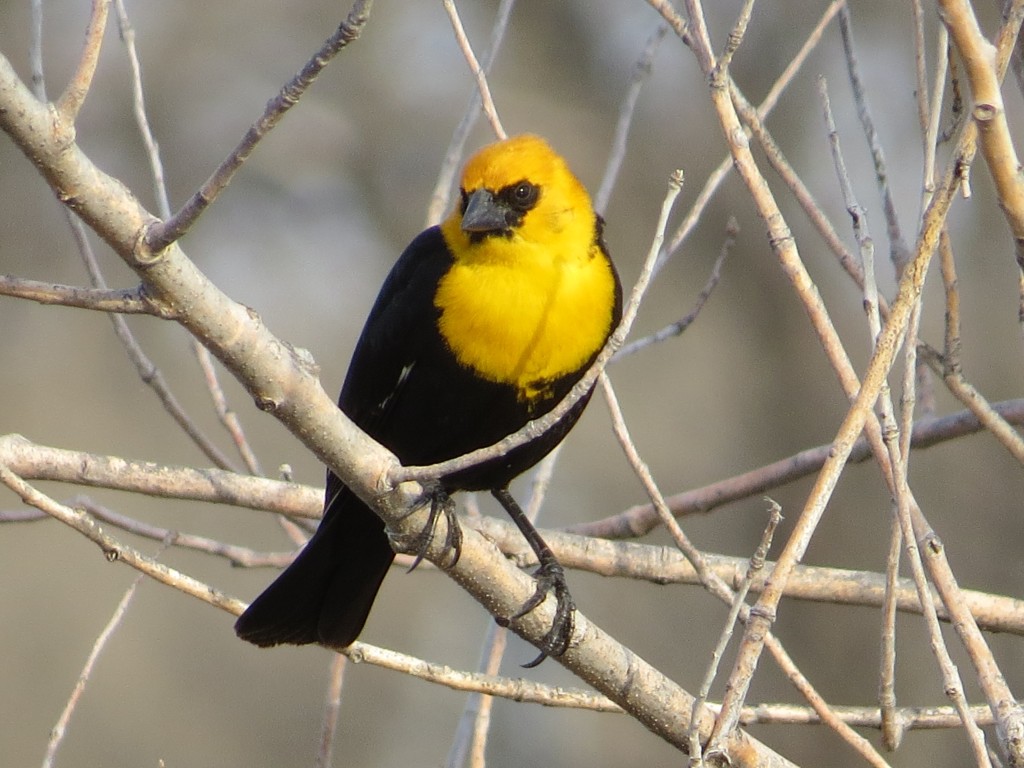
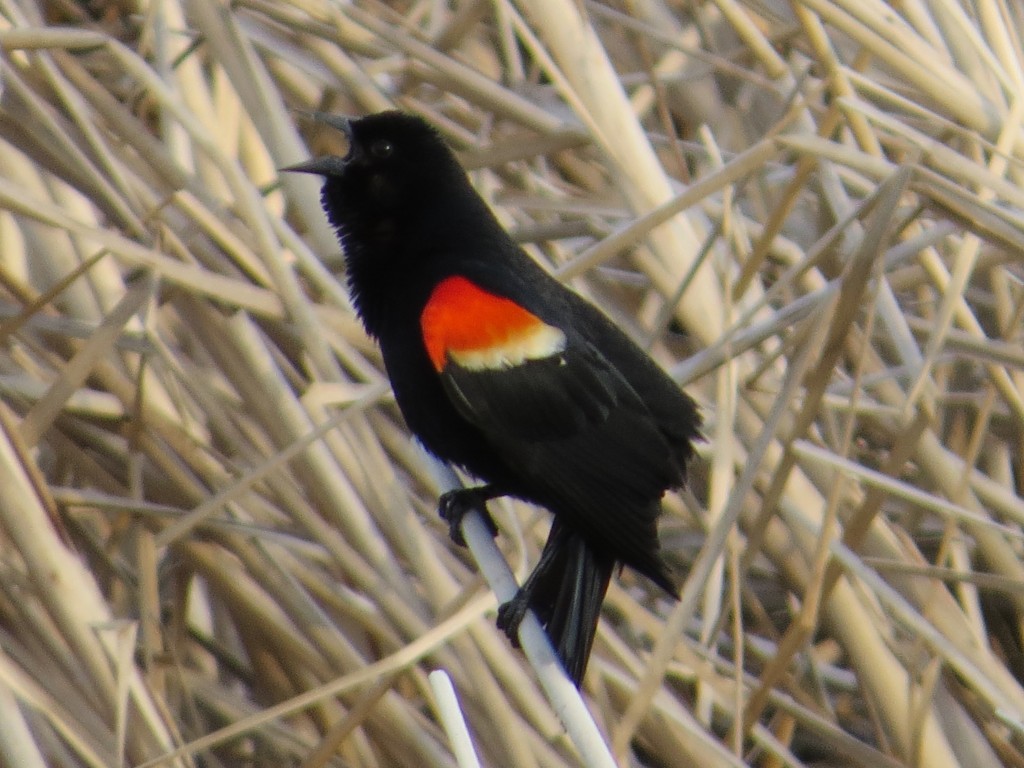 Blue-winged Teal are also fun to see in the evening light.
Blue-winged Teal are also fun to see in the evening light.
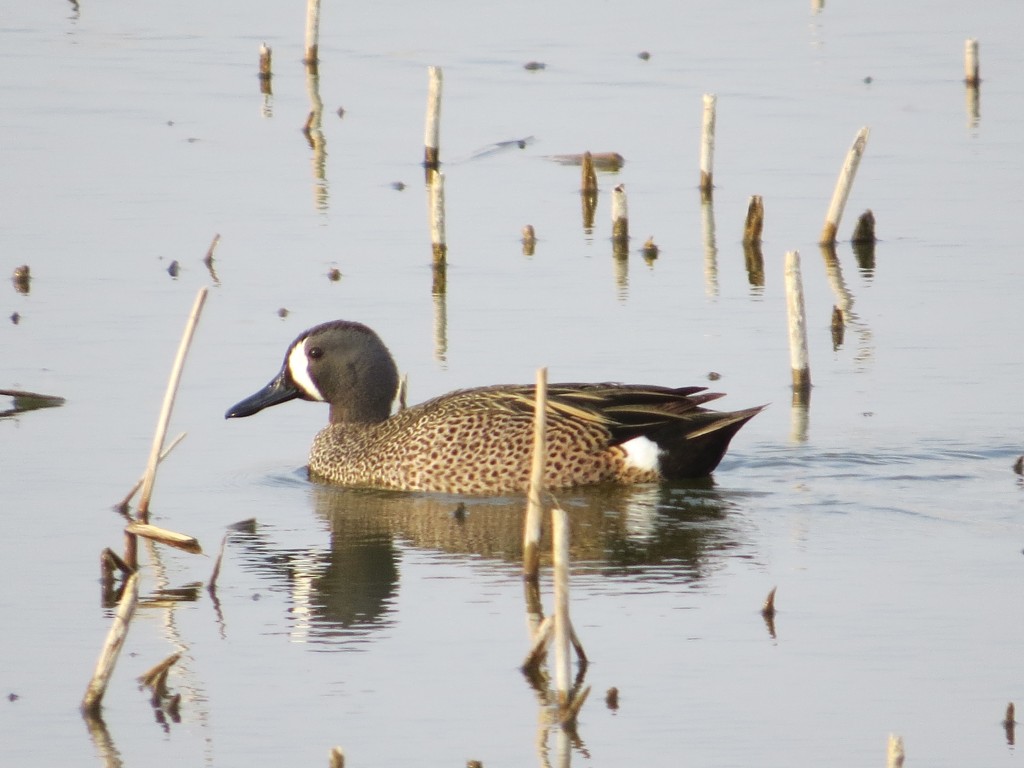 Steve also pointed out a life bird for me – the Wilson’s Phalarope. This bird was extremely close but would not sit still for me. I told Evan tonight that I’m going to have to find another one with him so I can get a better picture.
Steve also pointed out a life bird for me – the Wilson’s Phalarope. This bird was extremely close but would not sit still for me. I told Evan tonight that I’m going to have to find another one with him so I can get a better picture.

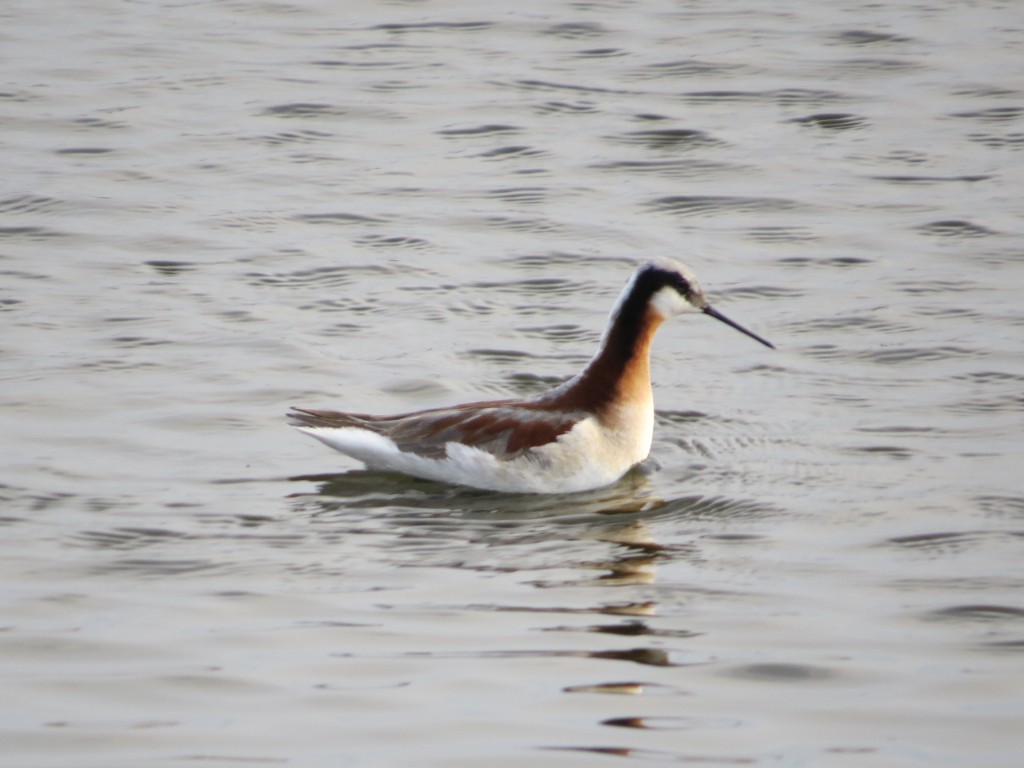
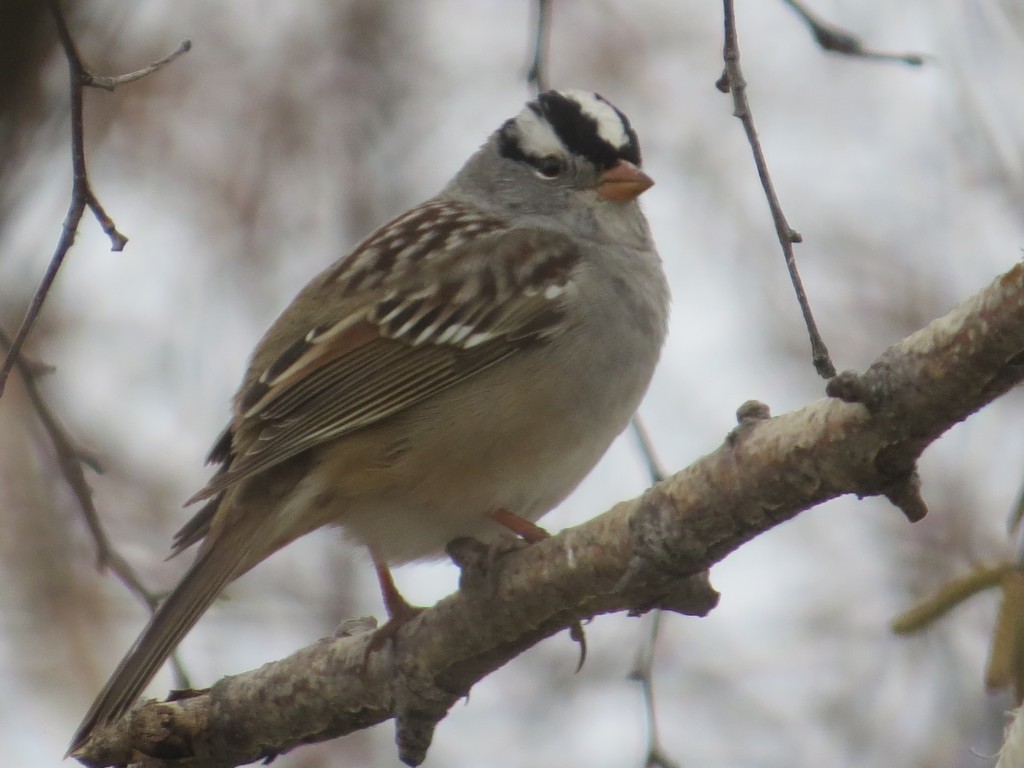
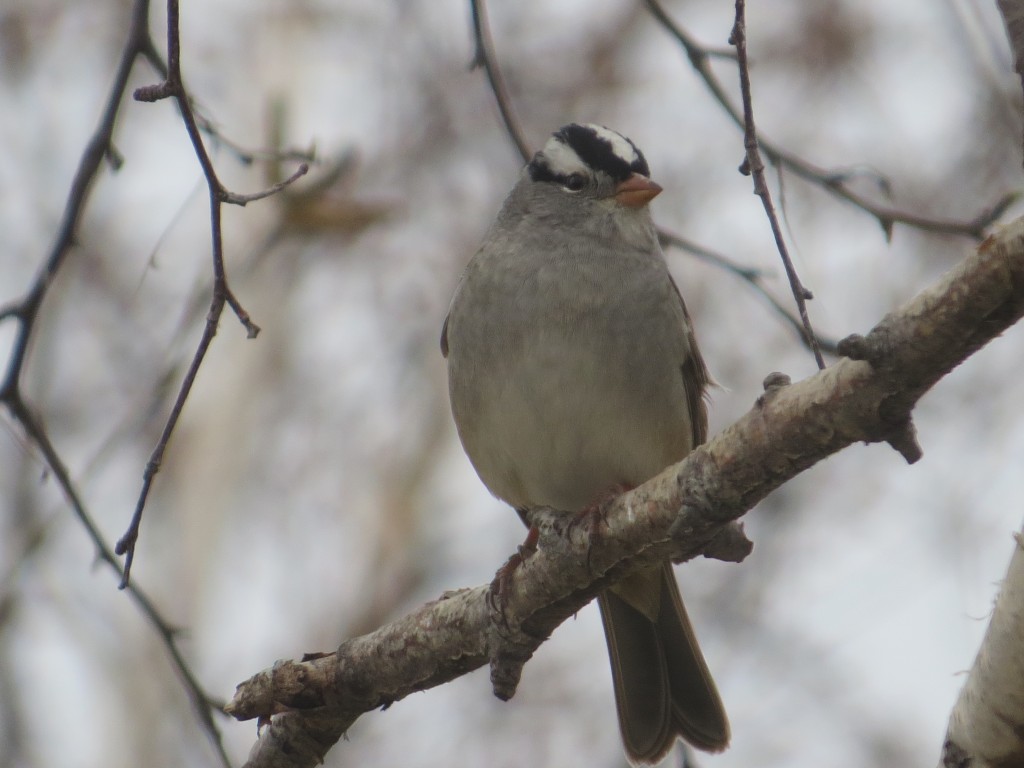
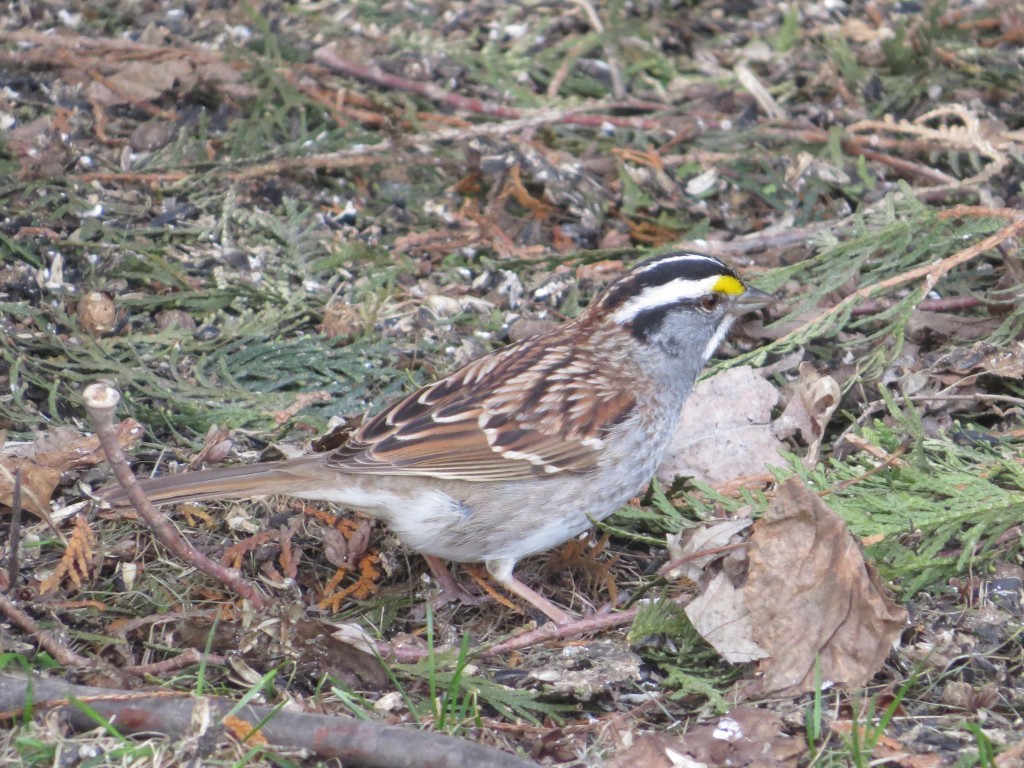
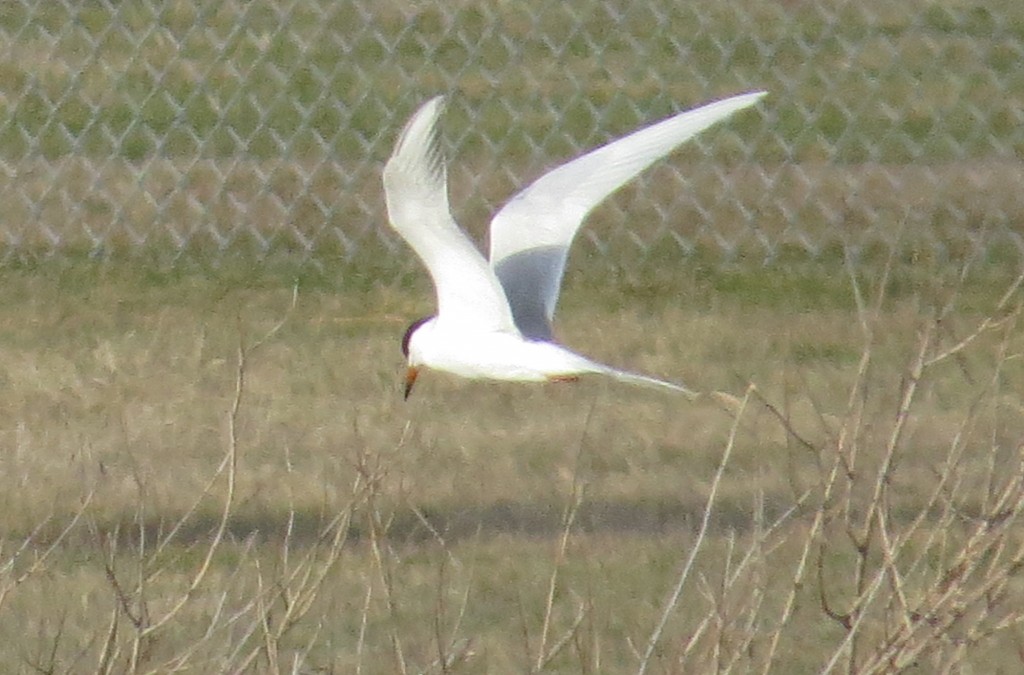
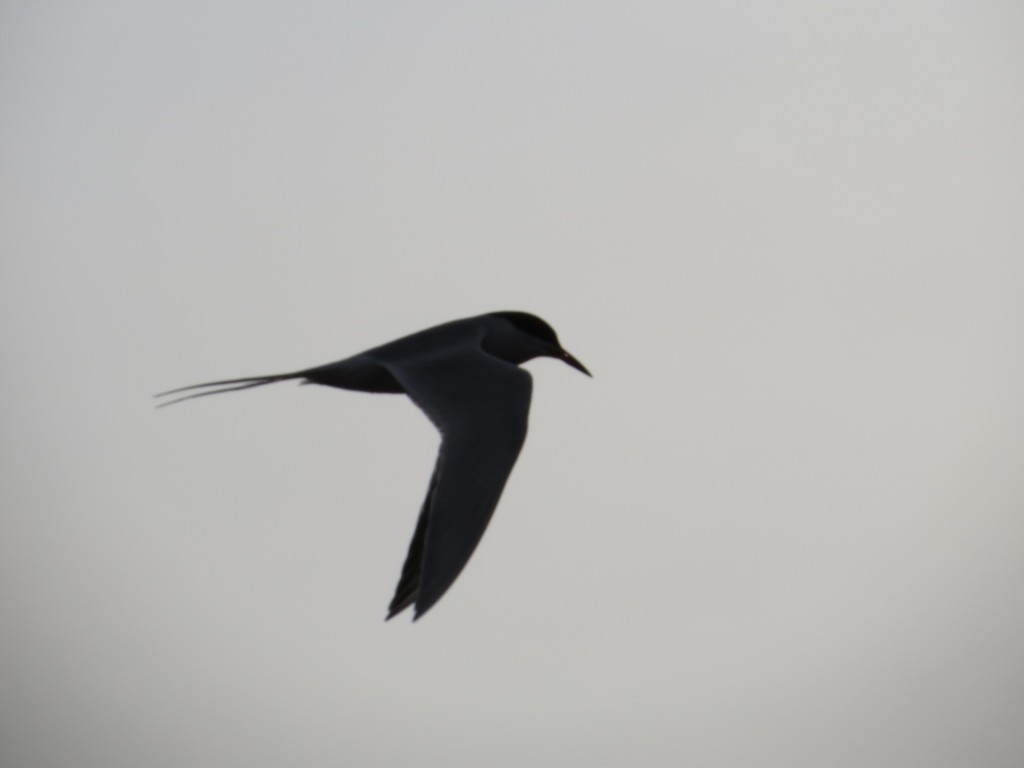
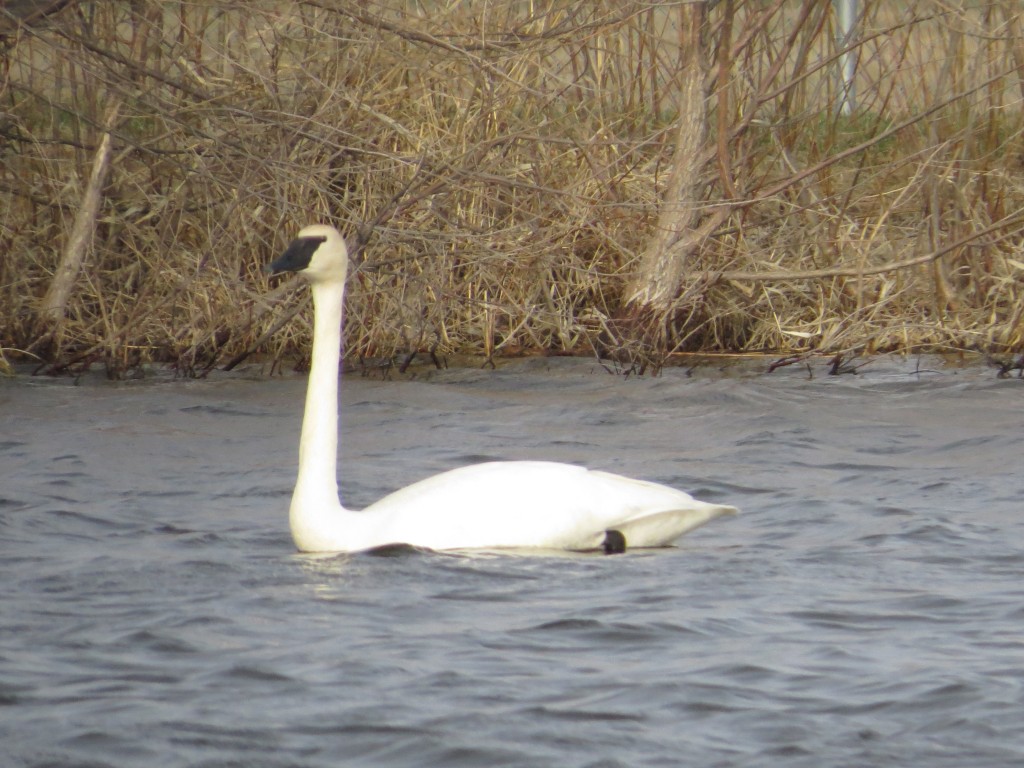
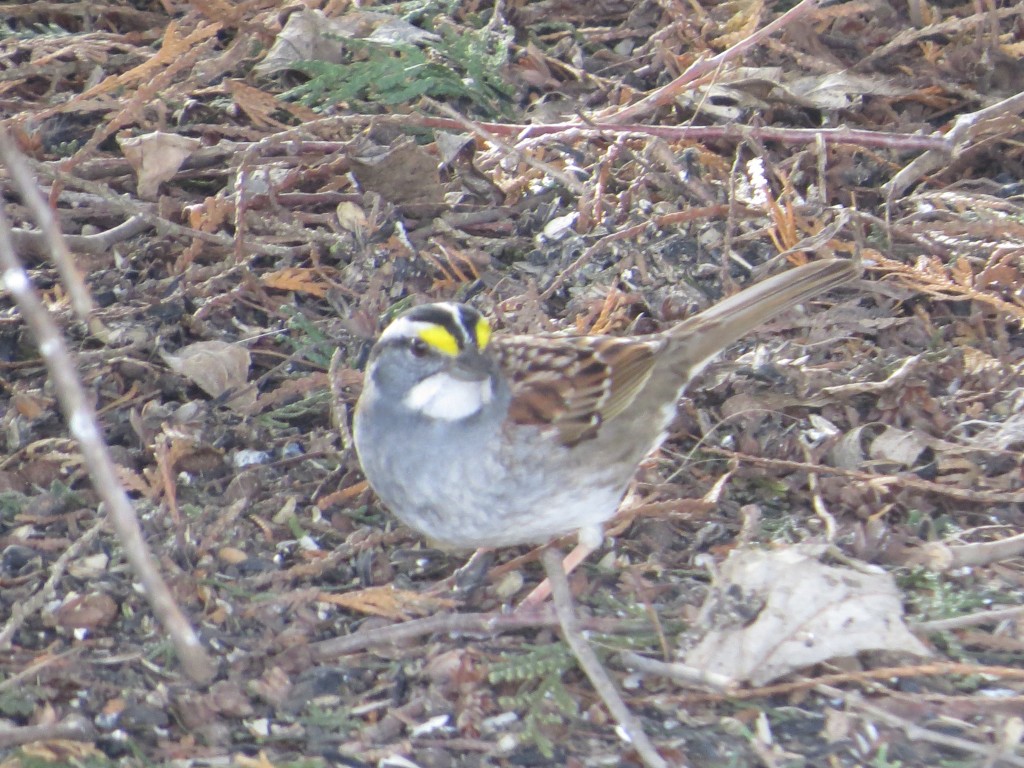
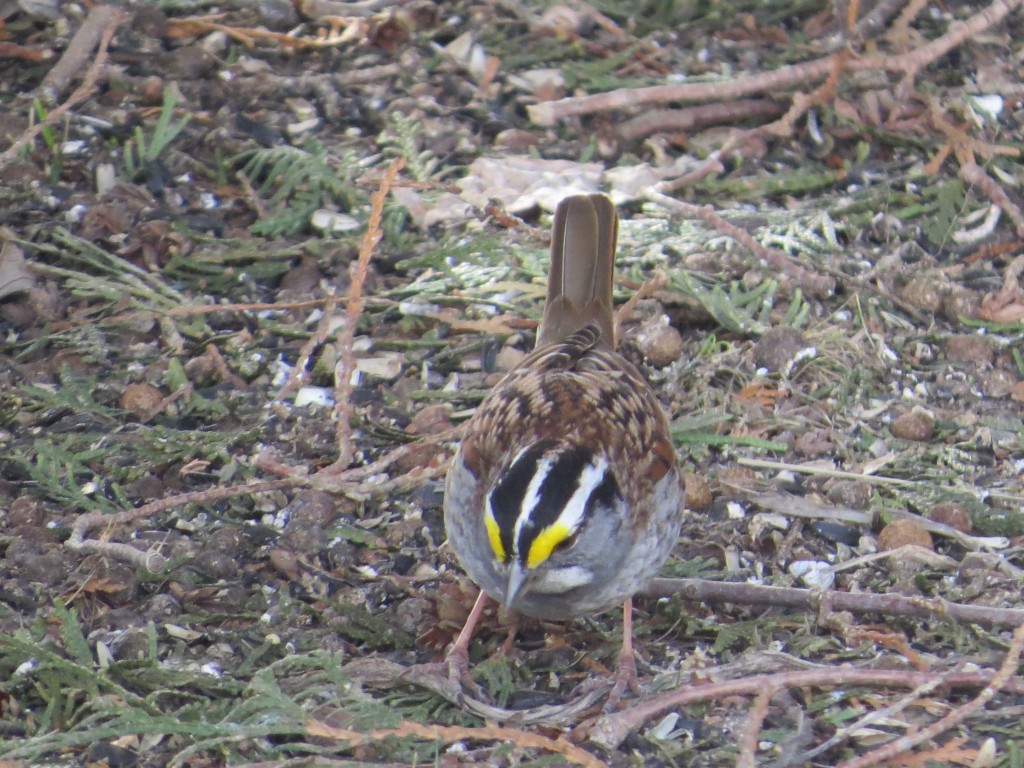
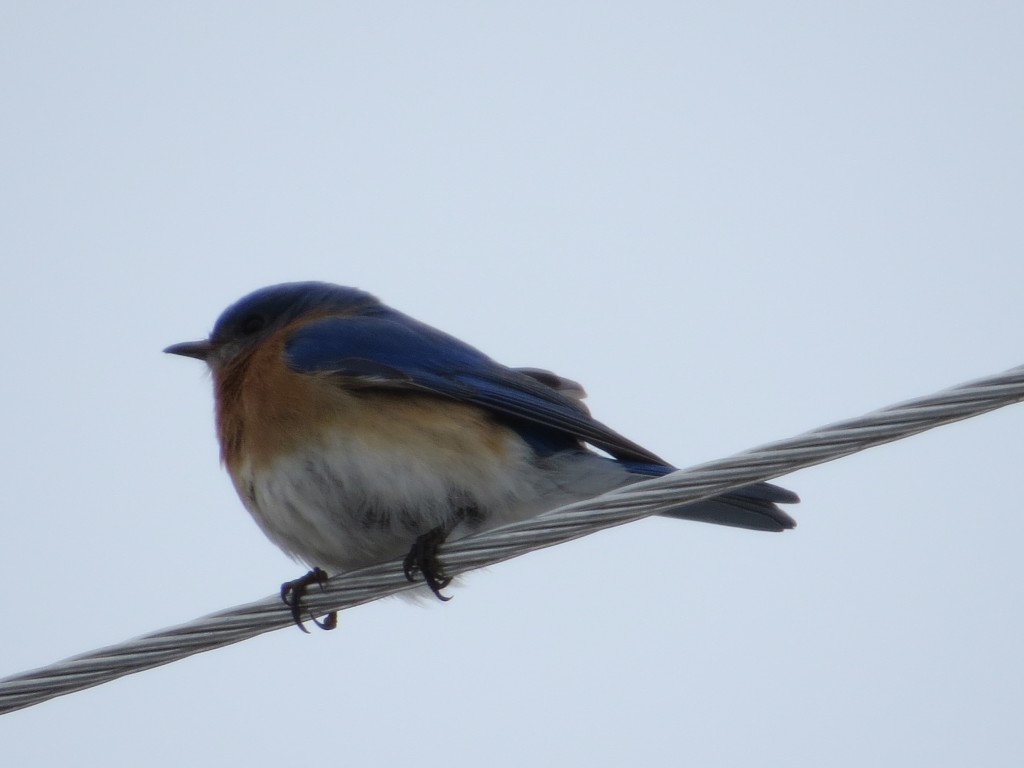
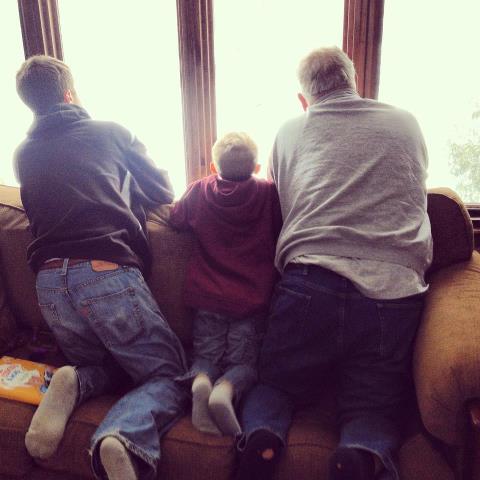
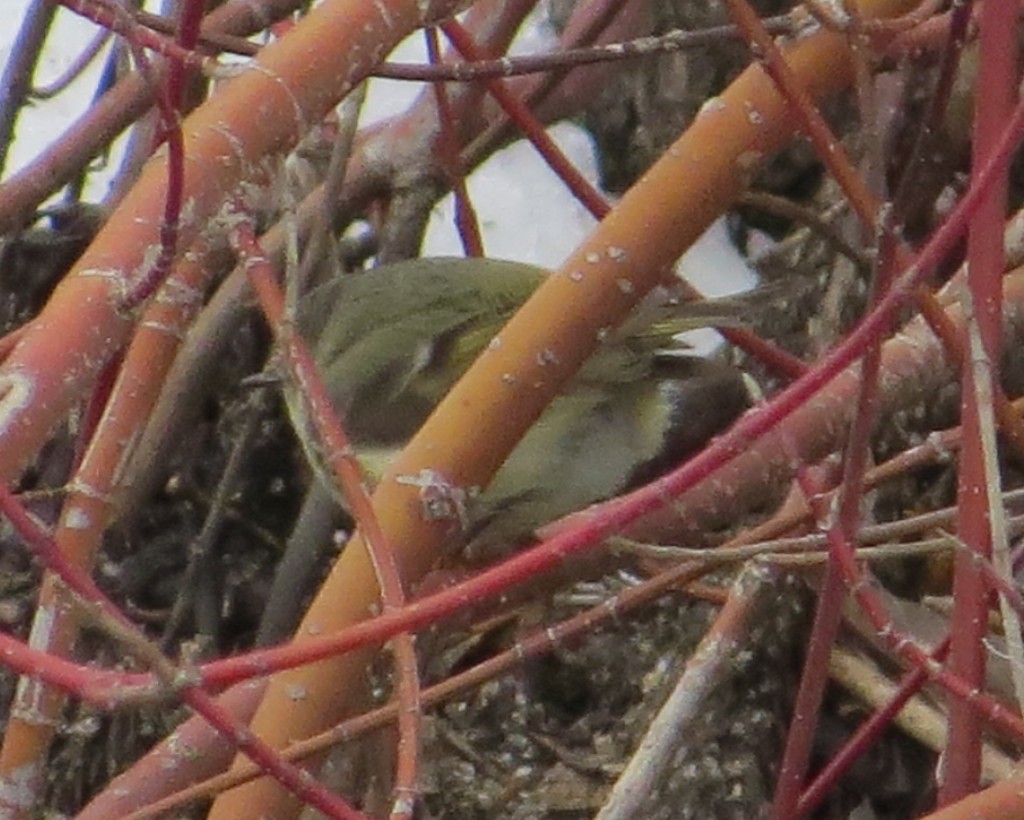
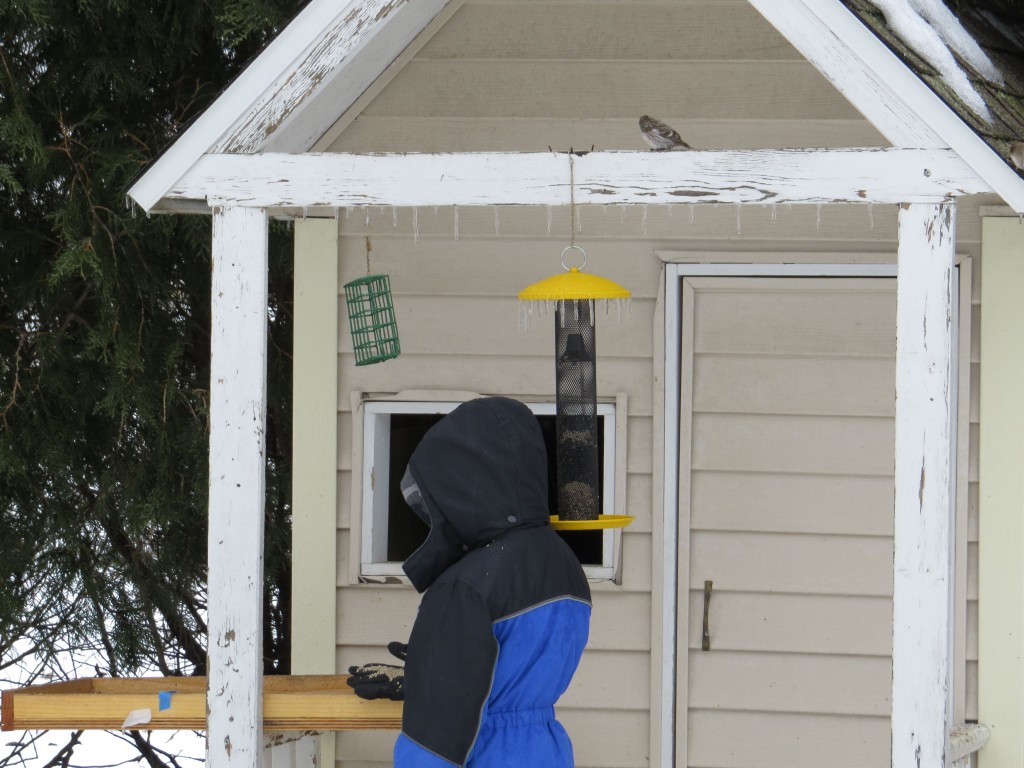 They were right by his head! I saw his body wiggle as if he were giggling at this sensational experience.
They were right by his head! I saw his body wiggle as if he were giggling at this sensational experience.